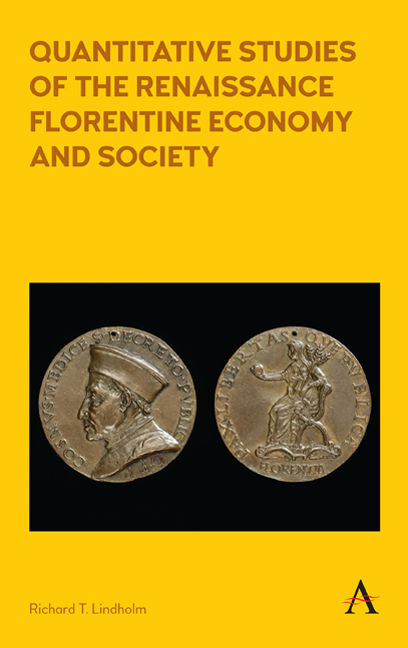Summary
This book, to paraphrase Sir Isaac Newton, is built on the shoulders of giants. The Italian Renaissance was one of the most vibrant and exciting periods of world history. It is also one of the most accessible. Florence is particularly so. Its vast archival resources provide wide-ranging opportunities for quantitative research. And its extensive literature on parallel developments in arts and letters provides context. The studies in this book rest on the achievements of many previous scholars.
Beginning with Newton is apt in another way. As an inventor of the calculus he created the modern way of thinking in terms of position, change and accumulation. The studies in the present book are largely based on this framework. The calculus is the mathematics of change and accumulation, differentiation and integration, respectively. It also forms the foundation for modern statistics—from the measurement of changes that is the basis of the regression equation to the measurement of accumulation that is the basis for information theory. These studies were chosen to show how this simple framework can lead to rich answers in Renaissance Florentine history. Much of the previous work measured positions on a scale – what was the percentage of the group that did this activity and so forth? The present study, though it is not novel, looks to incorporate the concepts of rates of change and accumulation into a broad range of topics. Each chapter uses a quantitative method and a fundamental social scientific principle to examine the Renaissance Florentine economy and society. The quantitative methods tease out the underlying process.
Historians have a wide range of research methods available. The choice of which to use can have an important influence on the findings. In general, work can use either qualitative or quantitative methods or both. Much of the research on this era is qualitative. This is completely understandable, since one's introduction to the Italian Renaissance is usually through its art. Rigorous qualitative methods, such as paleography and legal history, are already research tools that fit seamlessly into these more standard historical accounts.
The studies in this book use quantitative methods to examine the economy and society of Renaissance Florence.
- Type
- Chapter
- Information
- Publisher: Anthem PressPrint publication year: 2017



